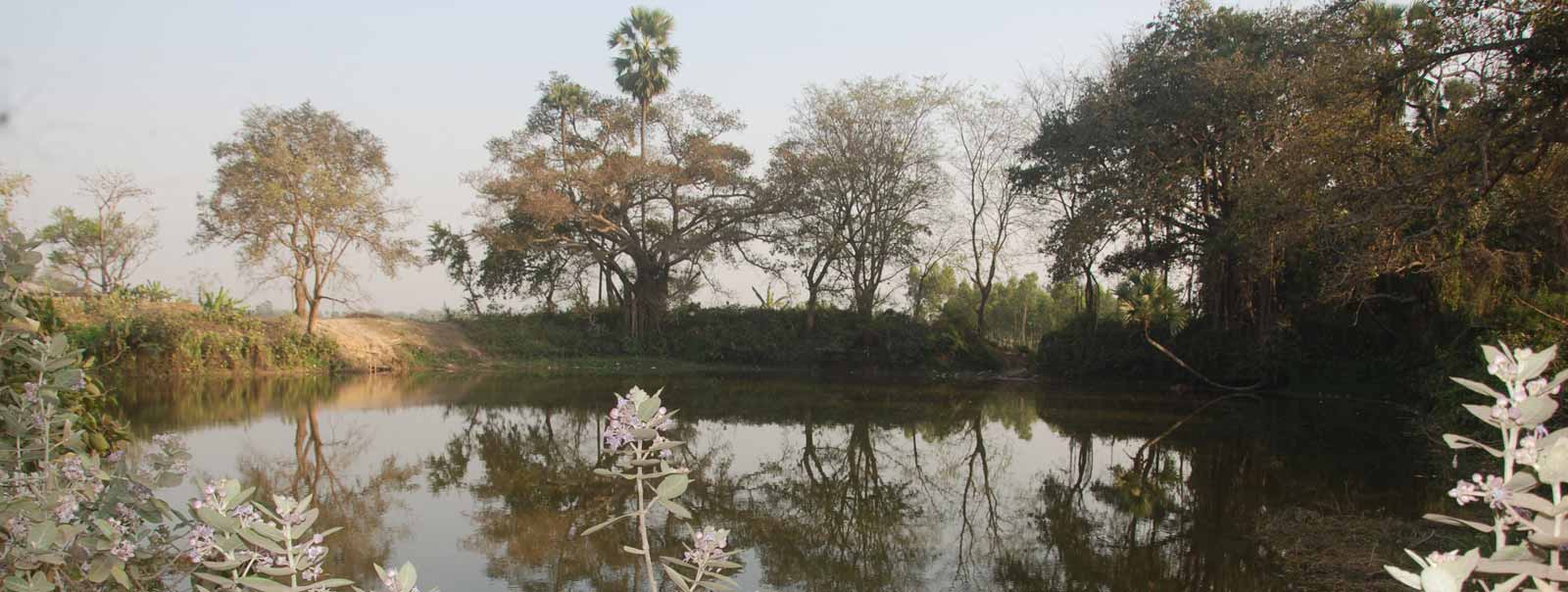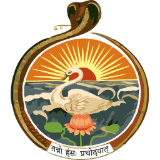JAYRAMBATI
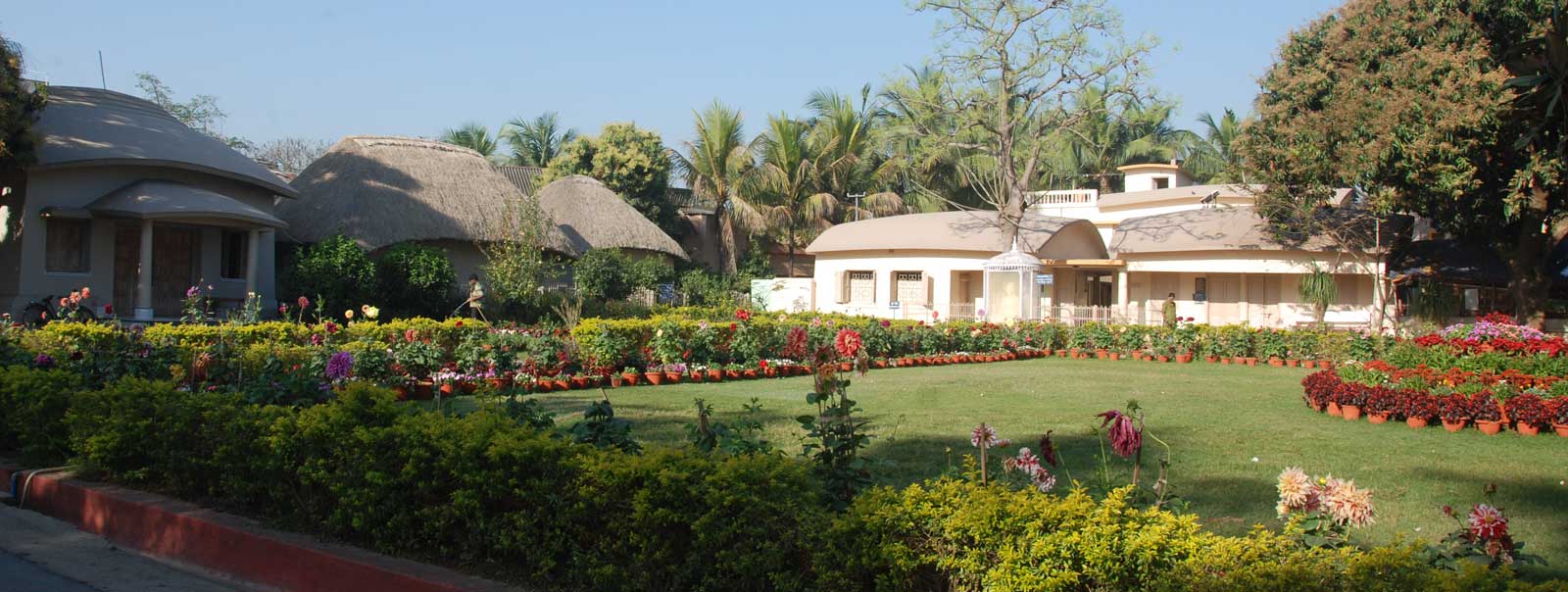
This village is located within the jurisdiction of Kotulpur Police Station in Vishnupur Subdivision of Bankura District. It stands about three miles to the west of Kamarpukur and two miles to the east of Sihar - the birthplace of Hridayram Mukhopadhyay, a nephew of Sri Ramakrishna. One has to cross the rivulet Amodar and vast open field to reach the village of Deshra which lies to the north of Joyrambati. Vishnupur and Arambagh are located at twenty-seven miles and about twelve miles and a half respectively from Joyrambati.
The natural scenery of Joyrambati is charming. This village, surrounded on all sides by green pastures, untrimmed meadows, trees and shrubs, breathes a typical rural atmosphere. The area that extends for about half a mile between this village and the Amodar is very fertile and yields all kinds of vegetables and other agricultural products. After the birth of Holy Mother, who is the veritable embodiment of Lakshmi, the Goddess of Fortune, the village began to show distinct signs of prosperity and profusion which were not so much in evidence before her advent.
The main source of irrigating the nearby cultivable lands is the big lake called 'Mother's Tank' where the visitors and the village-folk take bath. It is said that the Holy Mother in her girlhood used to cut aquatic grass for cows in neck-deep water from this very tank. At present water is supplied to this reservoir from the river Amodar by means of an electric pump and is utilized for irrigation of the surrounding fields for the purpose of cultivation. There is, besides, another tank called 'Barujjey pukur' (i.e. Banerjee's tank) which lies on the south-eastern corner of this village and is surrounded with palmyra trees. Since the birth of the Holy Mother, this picturesque village with its sacred traditions has become one of the most holy places of pilgrimage in the world. On one occasion, Holy Mother, after touching the dust of this place with her forehead, remarked, 'One's own mother and the land of birth are even superior to heaven'.
THE TEMPLE OF SINGHABAHINI
The Goddess Singhabahini is represented in the form of a metallic pitcher. The Holy Mother said that, once while she was lying before the temple under a vow of fasting to get her blessings for the cure of an acute disease from which she had been suffering for a long time, the Goddess Singhabahini appeared before her and her mother Shyamasundari in the guise of a blacksmith girl of about eleven or twelve years of age and suggested remedial medicines to them, which cured her completely. The Holy Mother after her recovery preserved some quantity of earth of this sacred place in a small casket, partook of it everyday and also gave it to Radhu (Radharani), one of her nieces. After the discovery of the curative power of this earth, persons from distant places began to swarm into this place to collect this holy earth with great devotion for the various kinds of maladies, and also as an effective medicine for snake-bite. That was why this Goddess attained to wide celebrity and great popularity among all classes of people.
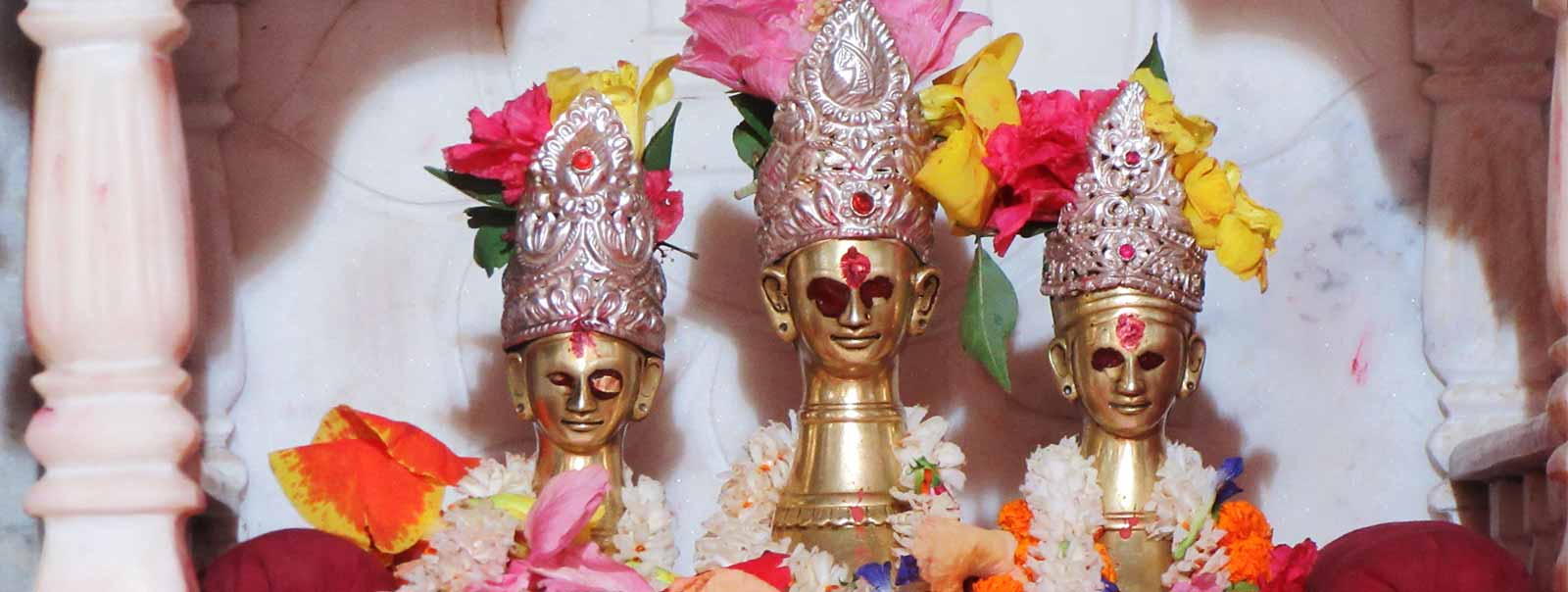
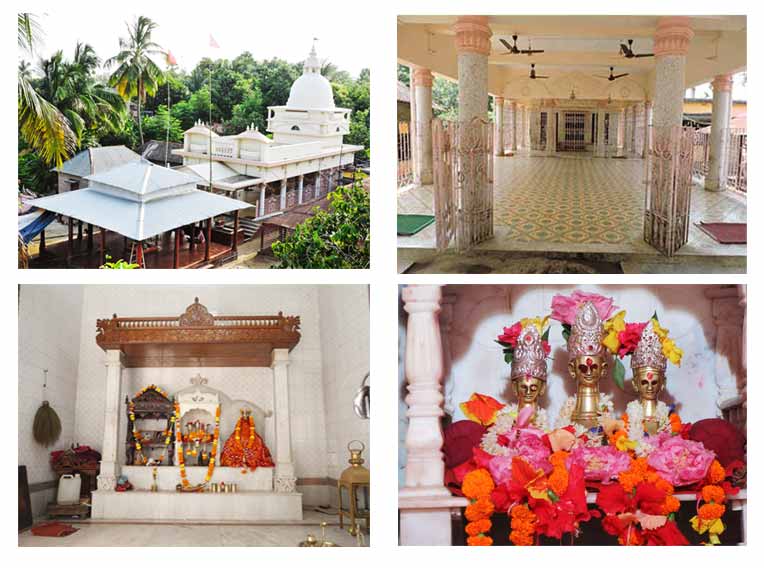
The old temple having been damaged beyond repair with the passage of time, the Goddess has of late been reinstalled in the newly built permanent temple where she is now daily worshipped. The front portion is covered with shed for the devotees. The Goddess Simhavahini and her two companions Sri Chandi and Mahamaya represented in metallic pitchers, have been installed therein on a raised platform and the Goddess Manasa has also been placed by their on the separate pedestal. A good number of devotees are coming to visit and worship the Goddess especially on Saturdays and Tuesdays from far and near. During the Durga Puja ceremony, the Goddess Simhavahini is worshipped with due clat and solemnly for three days with various offerings. The descendants of the Holy Mother's ancestral Mukherjee-family have all along been carrying on the worship of the Goddess.
AMODAR GHAT (BATHING-GHAT OF HOLY MOTHER)
The Rivulet Amodar, which was regarded by the Holy Mother as the Ganga, has formed on the northern out-skirt of the village a sort of a triangular-shaped peninsula which looks exactly like the back of a tortoise. Being dotted with marks of cremation, it presents a picturesque sight that excites a spirit of renunciation by reminding people of the transitoriness of the world. The course of the Amodar is towards the north at this particular place. Swami Saradananda used to meditate daily under the shade of the Amlak (myrobalan) tree that stood in the middle of this small peninsula during his stay at Joyrambati. Yogin-Ma, Golap-Ma and others, after their bath in this sacred river spent much of their time in meditation and in reading of the Gita, Chandi etc. Subsequently, a brick-built bathing-ghat was constructed on the spot where the Holy Mother used to take bath.
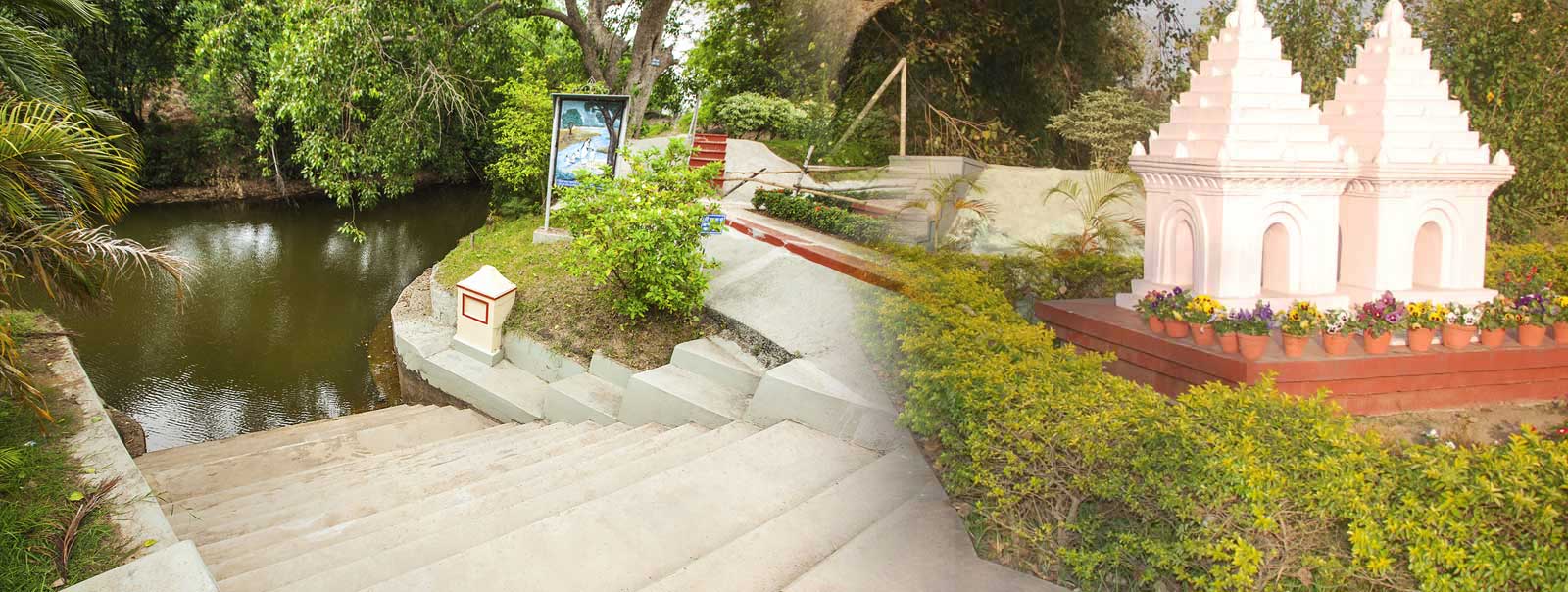
MAYER DIGHI (GHAT)
'Mayer Dighi' a large & deep pond in Joyrambati is belonged to Sri SriMatri Mandir. During Her earlier days Mother used to cut grass in this pond to feed cows. One Bus stop is at the bank of this pond known as ‘Mayer Ghat’.

YATRA SIDDHI ROY
Holy Mother, Sri Sarada Devi used to start Her Journey with doing pranam to village Deity, Yatra Siddhi Roy from Joyrambati to distance places.
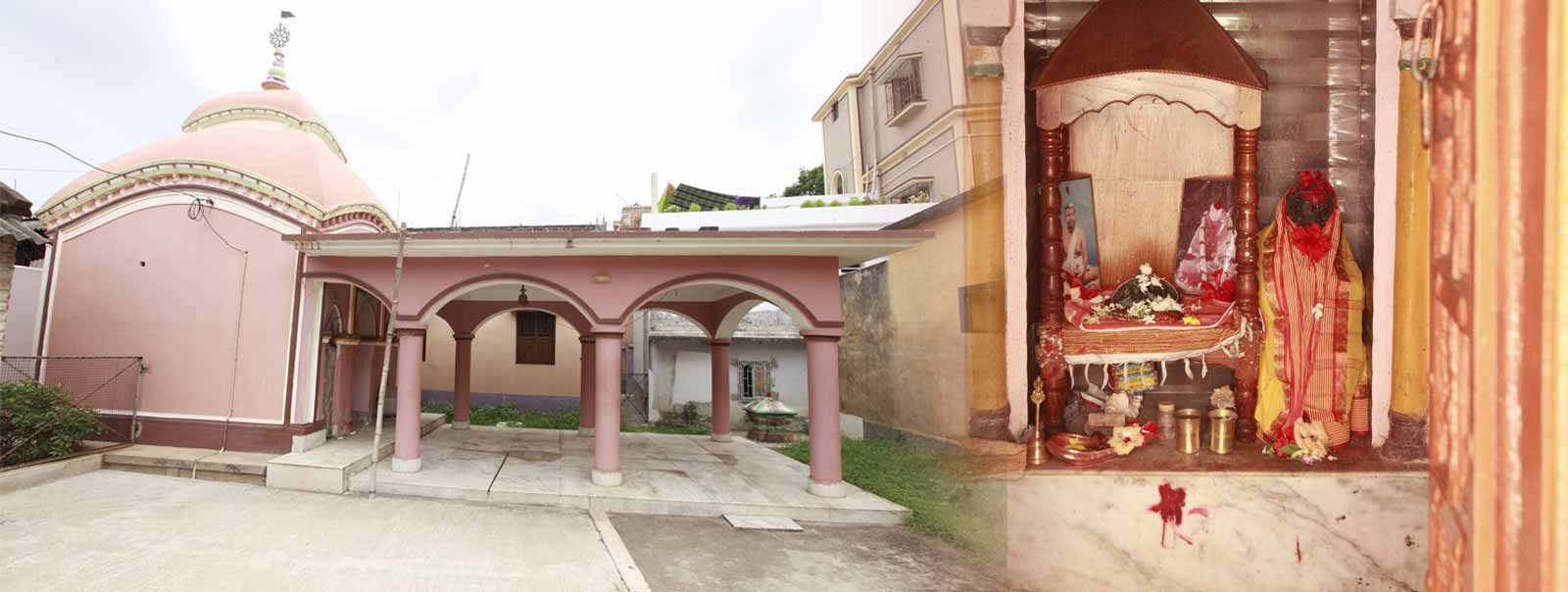
THE SITE OF BHANU-PISHI'S HOUSE
The ancestral home of Bhanu-pishi who was fortunate enough to receive the blessings of Sri Ramakrishna and was a companion of the Holy Mother in her younger days, stands near the Holy Mother's temple. She was regarded by Holy Mother as her aunt in terms of relationship existing between neighbors in a village. She was married in Phului Shyambazar which is not very far from Joyrambati. After the death of her husband, she came back to her ancestral home at Joyrambati. She entertained a great respect for the Holy Mother whom she looked upon as the Goddess Herself. The Holy Mother in her younger days often repaired to this house of Bhanu-Pishi to get mental peace and solace when the villagers wounded her susceptibilities by describing Sri Ramakrishna as her lunatic husband. The site of that house is seen at a little distance from the Mother's New House (Nutan Bari). Presently the site of Bhanu Pishi's house has been taken over by Sri Sri Matri Mandir and renovated.

BARUJJEY-PUKUR / TAL-PUKUR
This tank is also called 'Tal-Pukur' as it is surrounded on all sides by a row of Palmyra trees. It lies on the south eastern corner of the village. This tank is a ten-minute walk from Mother's House in the southern part of the village. The Holy Mother used to take her bath daily in this deep tank and also used its water for drinking and cooking purpose. When her children took leave of her after a few days of stay with her, she accompanied them up to this tank and stood staring at them till they disappeared from her sight.
